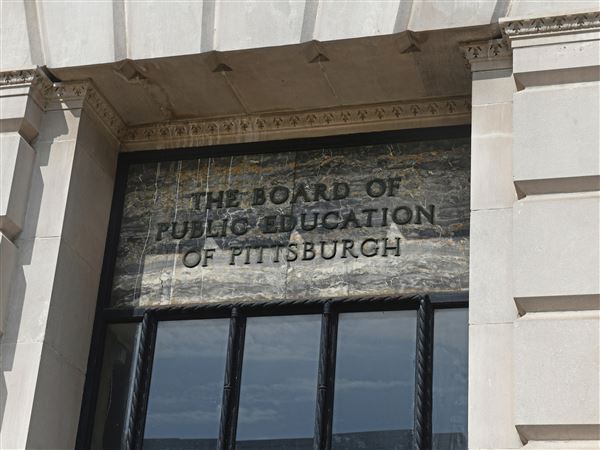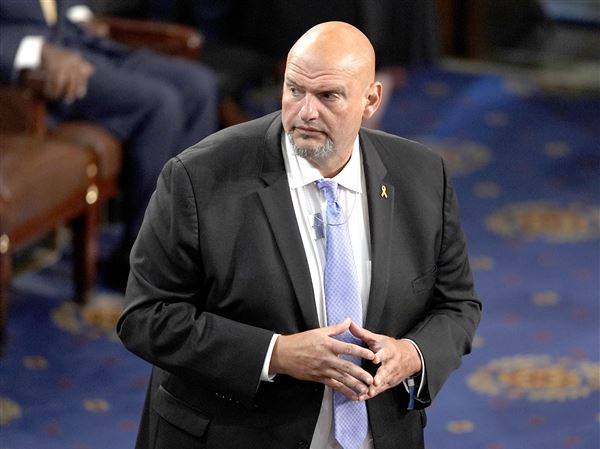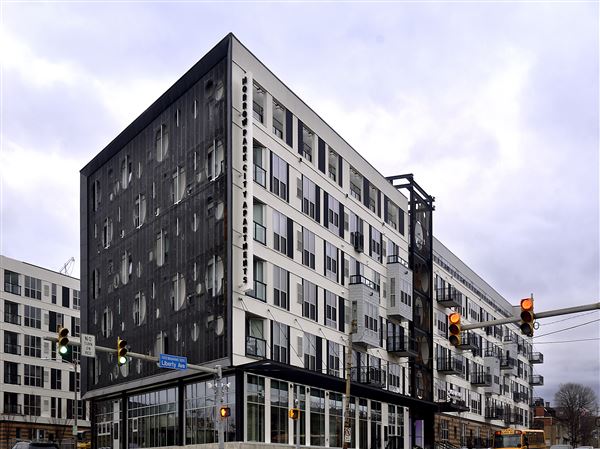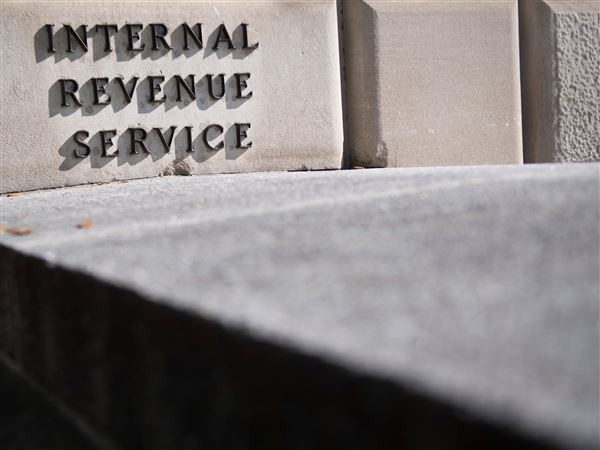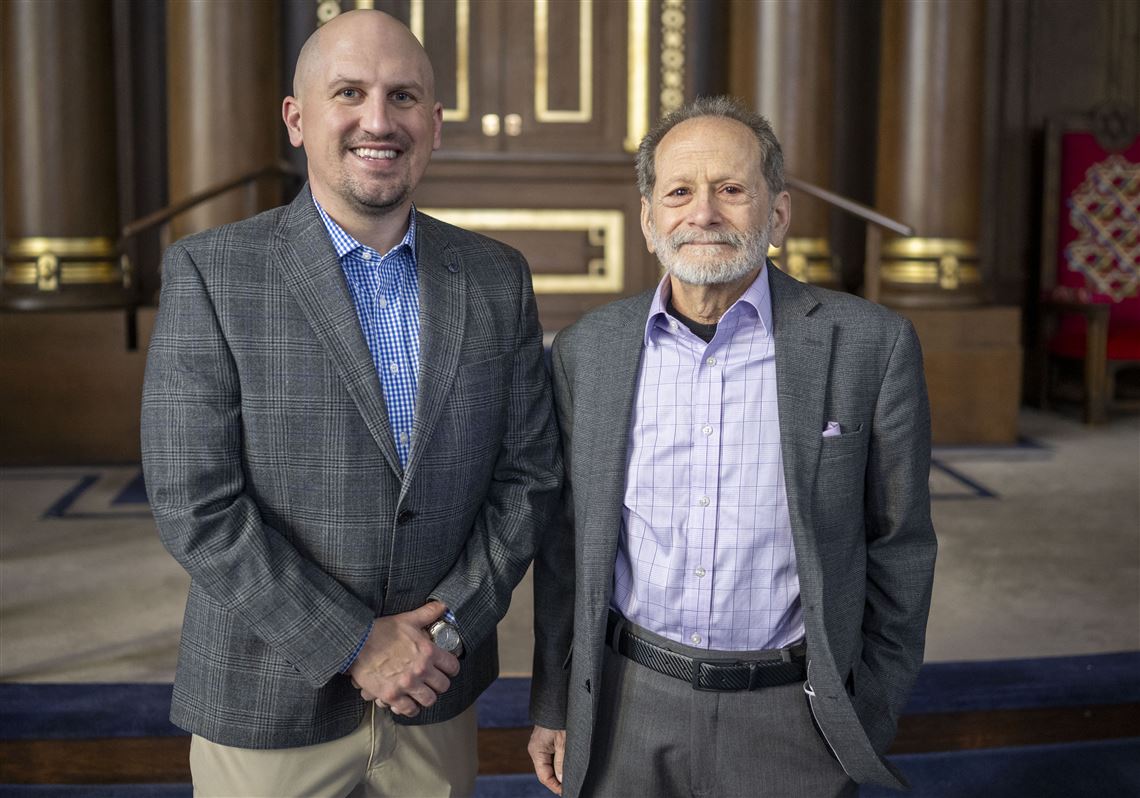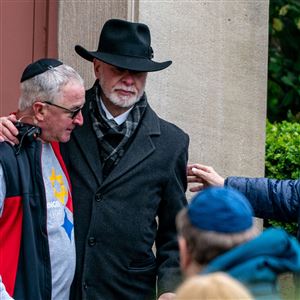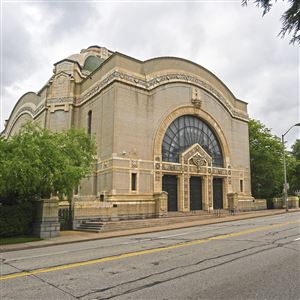In a matter of weeks, two historic Reform Jewish congregations in Pittsburgh’s East End will vote on whether to unify under one roof — and under which roof.
The debate comes nearly 80 years after Rodef Shalom and Temple Sinai split and signals what some consider to be one of the most significant chapters in the city’s Jewish history. Leadership of both congregations have spent about 18 months deliberating the ramifications of a merger.
Some congregants see it as a way to reinvigorate both congregations, while others worry the cultures are so different that they won’t mesh. Rodef Shalom President Bill Battistone and Temple Sinai President Stephen Jurman both support the move, but the decision will be put before the boards of both organizations in the coming weeks, followed by a membership vote in early May.
“When we talk about a vote, it’s not just going to be a yes or no,” Mr. Battistone said. “It’s really going to be, do you want to do this together or separately? Either of those options are going to require change.”
Regardless of whether the union is approved, change is destined for the city’s Reform Jewish community amid questions about the long-term sustainability of both congregations, Mr. Battistone said.
Over the years, both communities have dropped in size. Temple Sinai now has about 640 members, when a decade ago it boasted nearly 900, Mr. Jurman said.
Rodef Shalom’s congregation now numbers about 650, a nearly 50% drop from the 1,200 congregants in 2007.
As membership shrinks, both Rodef Shalom and Temple Sinai have been spending more than they have been bringing in, Mr. Jurman said.
“After the transition, we are pretty confident that we could have a combined synagogue that was able to operate in the black,” he said.
Other area synagogues have experienced similar difficulties.
Temple B’nai Israel in White Oak, which is also a Reform congregation, will close at the end of April, according to its website.
The president of Temple B’nai Israel, Lou Anstandig, said that is the result of an aging and declining membership. The congregation had about 600 families at its peak in the 1950s and 1960s, Mr. Anstandig said, but now only has about 60.
“It seems that younger families don’t seem to be as interested in joining traditional religious congregations and, frankly, I don’t think this is limited to Jews,” he said.
Other synagogues also have changed with the times, including Temple Emanuel in Mt. Lebanon, which announced a new financial plan in September, moving away from the traditional membership dues model, treasurer Steve Del said in a video published to YouTube.
“The current dues model is not able to sustain Temple [Emanuel] in the way it once did,” Mr. Del said in the video. “Overall dues giving has decreased over time, and the average amount of dues per membership unit has also decreased ... considering all of this, the board has approved a shift to an individualized giving model ... rather than pre-defined contributions based on your age or stage in life.”
In Pittsburgh’s East End, the decision to explore a merger of the two Reform congregations came amid dwindling membership, but also concerns over the cost of maintaining two historic buildings.
Financial survival
Rodef Shalom is housed in a sprawling facility at the corner of Fifth and Morewood avenues in Oakland that includes a 90-foot-tall domed synagogue with a stone facade, and two separate adjoining wings for social functions and religious education classes. Originally built in 1907, it has been renovated multiple times and designated a city landmark.
Temple Sinai has a 23,300-square-foot mansion the congregation bought in 1947 that was originally built by South Penn Oil Co. executive John Worthington, who died in 1918.
Both Mr. Battistone and Mr. Jurman said it’s not financially realistic to continue operating out of both buildings.
“If people think, ‘Well, I don’t want to unify, I just want Rodef Shalom to be the way Rodef Shalom has always been,’ that in some ways is a fallacy,” Mr. Battistone said. “That’s not going to be the reality either way. We’re going to have to start looking at doing things a different way in order to survive long term.”
A key part of that, Mr. Battistone said, is bringing the congregations together.
“The recommendation is going to be to unify,” he said. “It’s going to be up to the congregation to agree with us.”
Mr. Jurman hopes members of Temple Sinai embrace the proposal.
“I want to see a unified congregation that is financially stable and in the black, first of all,” he said. “But as I’ve said to our congregation, if money was the only concern, I wouldn’t be putting myself through this. I want to see us financially stable so that we can survive.”
Some congregants have pushed back against a merger, including Suzan Hauptman, a member of Temple Sinai’s congregation who also teaches at Rodef Shalom’s Sunday school.
Ms. Hauptman said she plans to vote against the unification because the two congregations have different worship styles — Temple Sinai is more participatory and engaging while Rodef Shalom is more somber.
“I’m not on the fence [about the merger] at this point,” she said. “It’s the culture. If I wanted to join Rodef, I would have.”
Ms. Hauptman also fears an exodus of congregants from both temples in a unification. “I see a lot from both leaving if that merger happens,” she said.
But others feel differently. A merger could be a good thing, said Rodef Shalom congregant Jan Shaw, precisely due to the differing cultures at each temple.
“I’m all for it,” Ms. Shaw, 64, of O’Hara, said. “I think it's the best …I think that it's going to create a lot of new energy for both congregations and I’m really looking forward to it.
“I’ve actually been waiting for this for years, so I was actually relieved when it happened.”
If the union is approved, it would make history in another way, as well – marking a reunification of the two congregations, one of which served as the parent of the other.
Separate synagogues
The founders of Rodef Shalom in the 1840s were among the first Jewish residents of Pittsburgh, according to the synagogue’s website.
In 1856, the charter of Rodef Shalom formally created both a Jewish day school and congregation. Six years later, the community built the first synagogue in Western Pennsylvania, on Eighth Street in Downtown Pittsburgh.
In the 1860s, the congregation joined the Reform Movement, which differs from Orthodox Judaism. The fundamental difference is the approach to the Torah – the first five books of the Hebrew Bible – and the implications of that approach.
The Orthodox believe theTorah comes directly from God and cannot be changed; Reform Judaism follows the belief that it is rooted in the past, and Judaism needs to adapt to the times to survive, according to ReformJudaism.org.
While men and women must sit separately in Orthodox synagogues; in Reform synagogues, they can sit together. Reform Judaism, also referred to as liberal or progressive Judaism, also permits women to be rabbis and has a less strict observance of Shabbat, the traditional day of rest from Friday evening until after dark Saturday.
In 1907 Rodef Shalom moved from Downtown to the East End, where famed Parisian-style architect Henry Hornbostel designed and built a synagogue that would be recognized as a historic landmark in 2022.
In 1946, Rodef Shalom approved the creation of Temple Sinai, the second-oldest reform congregation in the city that pledged, at the time, to meet the needs of Pittsburgh’s unaffiliated Jews.
The creation of Temple Sinai was part of the national “New Congregations Program” spearheaded by the Union of American Hebrew Congregations, and was established to meet the needs of the city’s changing Jewish community, which included interfaith couples and those practicing the faith who were not a part of a congregation.
The congregation of the new Temple Sinai purchased the John Worthington mansion on Murdoch Street and Forbes Avenue in Squirrel Hill. It was formally dedicated in 1949.
In 1955, Temple Sinai celebrated the payoff of the mansion’s mortgage; it purchased an adjacent property the following year, according to the Senator John Heinz History Center.
In addition to Temple Sinai, Rodef Shalom established other Reform congregations including Temple Emanuel in Mt. Lebanon and Temple David in Monroeville.
As the region navigated an economic downturn with the closing of steel mills and a population decline at the end of the 20th century, Rodef Shalom made a statement by restoring its building.
“The congregation’s decision to invest in the restoration of its Shadyside temple in 1990 instead of merging with one of these congregations or moving itself to the suburbs demonstrates its commitment to remaining the anchor of Reform Judaism in Pittsburgh,” former Rodef Shalom President Matthew Falcone wrote in a November 2021 application for landmark status for the synagogue.
Now facing new questions about how to move forward amid a countrywide decline in support for organized religion, the question of a merger of Rodef Shalom and Temple Sinai has become more urgent.
“In 2025 brick and mortar religious institutions are facing challenges across the board. It doesn't matter if it's Reformed Judaism or Christian denomination or whatever else you want to refer to, membership is down,” Mr. Battistone said.
“I think the reality is, in order to face the challenges of 2025 and beyond, we’re going to have to start doing things differently and I think we’ve come to that realization through this process.”
The way forward
The questions surrounding unification have not been simple, nor has it been easy to envision what a combined congregation would look like, Mr. Battistone and Mr. Jurman said.
To help reach a decision, the congregations created working groups of volunteers to compile information about topics that include each organization's educational programs, worship practices and business operations.
“The work has been delegated as broadly as possible,” Mr. Jurman said. “It’s been a goal to involve people in the process, not just stand up and make announcements.”
They also brought in local architecture consultant firm Rothschild Doyno Collaborative to evaluate each group’s building to determine which could be best suited to house a conjoined congregation. Another option was to buy a new building, but that idea was rejected.
“It’s hard to find a third location that would fit the needs of a unified congregation that would be within a short radius of where most of our members live … so it doesn’t make any sense to purchase a new property and rebuild a temple when you have two that are currently existing,” Mr. Battistone said.
A final recommendation on the building will come soon, Mr. Battistone said.
“We are not going to ask people to vote on unification not knowing where the congregation will be located,” he said. “We know that’s really important to people, and we’re making sure to do all of our due diligence to see what sort of physical space meets the need best.”
Throughout the past 18 months, the message has remained the same: “It’s unifying and having a stronger congregation with more resources to do the things that we want to do in Pittsburgh and for the Jewish population,” Mr. Jurman said.
And while both men understand the historic significance of the decision, they remain committed to keeping themselves untethered from the past.
“One of the people we had spoken to said our history can’t be a handcuff,” Mr. Battistone said. “It has to be a bracelet. It’s got to be something we wear to show we’re proud of it, but it can’t handcuff us to the past.”
The future solvency of both congregations is a personal issue for Mr. Battistone.
“My daughter is 3 and I want to make sure that I’m creating a religious entity, a congregation, that she can participate and grow up in and have a meaningful experience in,” he said. “The only way I think our congregations are going to continue to survive and thrive moving forward is together.”
First Published: March 23, 2025, 8:00 a.m.
Updated: March 24, 2025, 1:23 p.m.
